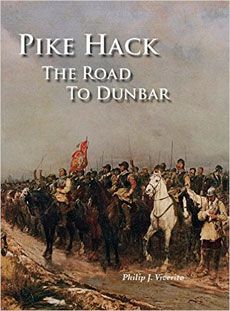|
Advertisement
|
Pike Hack: The Road to Dunbar

DescriptionIn the 17th Century, three English civil wars produced a new and truly Great Britain. In the first and second wars (1648-49), supporters of King Charles I clashed with the supporters of the Long Parliament, while the third war (1649-51) pitted supporters of King Charles II against supporters of the Rump Parliament. It all ended with the execution of King Charles I, the exile of his son, King Charles II, and the shifting of the seat of government power. The outcomes of these battles are well documented, but what would be different had the troops of King Charles II prevailed at the Battle of Worcester or if Sir John Hotham failed to keep Charles I from entering Hull? In this fun and fast-paced game, players use D-10 dice for casualty and morale calculations and D-6 dice for additional movement (evades and pursuits). The D-10 system for casualty and morale eliminates the endless modifiers that tend to make each move a monotonous chore. An added wrinkle in this system is the use of directional dice for command control and first artillery fire. We found that the use of directional dice for these functions keeps the game streamlined, fast-paced, realistic and fun. The appendix contains tactical information, color illustrations to better explain tactics, and four pages of suggested army compositions. Because there are several different types of units, players are also provided with sample army lists and blank templates for composing custom lists. —description from the publisher Game DiscussionsAdd CommentYou need to be logged in to comment. Insert Bullet List Please enter at least one item. Item: Item: Item: Item: Item: Insert Numeric List Please enter at least one item. Item: Item: Item: Item: Item: Insert Link Please enter the link of the website Optionally you can add display text Insert Email Please enter the email address Optionally add any display text Insert Image Please enter the link of the image Insert YouTube Video Please enter the link of the video Marketplace | ||||

Comments (0)